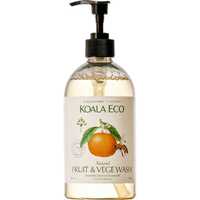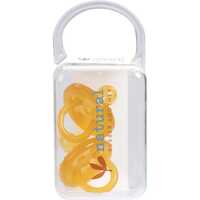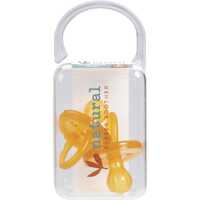Yerba mate, or simply mate, is a popular tea from South America. It's made from leaves of the plant Ilex paraguariensis, which are steeped in hot water or made into an iced tea. Mate has a high concentration of caffeine and other stimulants, along with a variety of beneficial antioxidants and micronutrients. Yerba mate is much-loved across the region, from Argentina and Brazil to Uruguay and Paraguay.
In this article, we'll review yerba mate and what it means to the South American people. From the rich history and cultural importance of mate to its nutritional profile and preparation, you'll learn about this wonderful drink and how to incorporate it into your diet.
Yerba Mate: The Plant and Name
Along with describing the beverage itself, 'yerba mate' is the name of the plant species the tea comes from. It's part of the holly genus Ilex, which is native to many parts of South America. Yerba mate was first named by the French botanist Augustin Saint-Hilaire, who travelled extensively across South America in the early part of the 19th century. It was previously called chimarrão, cimarrón, or ka’ay, and it was integral to many South American cultures.
Yerba mate starts life as a shrub, growing into a tree up to 15 m in height. The leaves are evergreen, the flowers are greenish white, and the fruit is a tiny red drupe around 5 mm in size. The word 'yerba' describes an 'herb,' 'grass,' or 'weed'; and the word 'mate' means both 'container' or 'gourd' and 'infusion of an herb.' 'Yerba mate' can be translated literally as 'gourd herb.' In case you're wondering, the 'mate' in 'yerba mate' is not pronounced like the Australian 'mate,' but more like 'maa-tay.'
A Short History of Yerba Mate
To understand the importance of this beverage to the South American people, you need to know its history. The discovery of yerba mate has been attributed to the small Kaingang ethnic group, who ate the raw leaves as early as 3000 BC. It is mostly associated with the indigenous Guaraní people, however, who live across large regions of Paraguay, Argentina, Brazil, Bolivia, and Uruguay. It also has a long association with the Tupí people, who helped to spread the drink across the continent.
The Guaraní people lived in areas where the plant had natural distribution. They drank the tea and chewed the leaves, both socially and also for medicinal reasons. Yerba mate became an object of worship and ritual, and it was also used as currency to trade with other tribes. It has long been worshipped as a sacred gift from the gods, with the original Guaraní elders said to have gathered together and drunk mate.
The consumption of mate became more widespread after European colonisation, particularly when the nation of Paraguay was settled in the 16th century. Spaniards founded the colony of Asunción in 1537, and mate soon became the area's biggest commercial export. By the early 17th century, yerba mate had become the chief export of the Guaraní territories. This was largely due to the Jesuit missionaries, who spread the beverage and started drinking it themselves in tea bags.
The yerba mate plant was domesticated by the mid-17th century, and Brazil soon became the biggest producer. It is now grown across South America, from its original home of Paraguay to Uruguay, northern parts of Argentina, and southern Brazil. There has been a resurgence in mate consumption over recent years, with Lionel Messi and his Argentinian teammates even drinking it at the latest FIFA World Cup. You can find yerba mate in health food stores across the Western world, where it's sold as loose leaves and also in tea bags.
A South American Favourite
Yerba mate is more than a tea in many South American nations — it's an important part of their cultural identity. Mate is the national drink of Paraguay, where it's typically consumed with hot or ice-cold water. The cold water version of yerba mate is called tereré, which normally includes other medicinal herbs. Mate is also consumed cold in Brazil, where it has become an important part of the beach culture in Rio de Janeiro.
Along with Paraguay and parts of Brazil, mate is well-loved in Argentina, Uruguay, southern Chile, and eastern Bolivia. Argentina even celebrates National Mate Day, which takes place on the 30th of November every year. Drinking mate is part of social life in all these countries, where it's often consumed as a social ritual with customary rules. While people in the West mostly drink mate in tea bags, traditionally people used a hollow gourd. The gourd is passed around a circle, with people taking turns drinking from a metal straw.
In Paraguay, Argentina, Uruguay, and Southern Brazil, groups of friends regularly meet to drink mate. Much like drinking coffee in Europe or Australia, yerba mate is a way for people to meet and connect. People also carry gourds and thermal flasks when walking the streets in South America, especially in Paraguay and Uruguay. In a world of increased globalisation and homogeneity, yerba mate is truly unique and authentically South American.
Nutritional Compounds in Yerba Mate
Yerba mate has a range of beneficial compounds, including natural stimulants, polyphenols, and minerals. Many of these compounds are potent antioxidants, which help to cleanse the body of damaging free radicals. Mate features caffeoyl derivatives and polyphenols, both of which function as antioxidants. Many people drink mate for its stimulating properties, which come from xanthines such as caffeine, theobromine, and theophylline. While yerba mate doesn't have as much caffeine as coffee, the existence of other stimulants creates a different kind of buzz.
Along with stimulants and antioxidants, mate has a number of beneficial micronutrients. Vitamins include vitamin C, vitamin B6, thiamine, and riboflavin; and minerals include potassium, calcium, magnesium, phosphorus, manganese, and iron. The tea only contains a small amount of these micronutrients, however, so it's unlikely to be a major contributor to your diet. Most of the goodness in yerba mate is due to the antioxidant content, especially quercetin, rutin, flavonoids, and other polyphenols.
The stimulating effects of yerba mate can be advantageous, with moderate consumption potentially boosting energy levels, improving mental focus, and enhancing physical performance. Just like with coffee, however, these gains are likely to be short-term. In studies, yerba mate has also shown promise in promoting fat loss during exercise and decreasing body fat mass without adverse side effects. In parts of Argentine culture, one of the stimulants in mate is said to be a substance called 'mateína.' This compound was named after the drink itself, but it's an invention by tea producers.
In addition, yerba mate may have a protective effect against certain infections, including bacteria, parasites, and fungi. This may help to explain its popularity in pre-colonial South America, where access to clean drinking water was not always guaranteed. In studies, yerba mate has been shown to protect against E.coli bacteria and Malassezia furfur, which is a fungus responsible for dandruff and certain skin rashes. Last but not least, yerba mate may assist with heart health. According to studies, it may help to improve glycemic and lipid profiles in people with diabetes and reduce cholesterol when combined with a low-calorie diet.
How to Make the Perfect Cup of Yerba Mate
There are two primary ways to drink yerba mate: the traditional method using a gourd and straw and the modern method with tea bags. You can also find mate in many herbal tea blends, where it's mixed with other beneficial plants to induce a range of effects. If you're not a fan of hot drinks, you can consume yerba mate as an iced tea. It's regularly sold as a cold beverage, or you can make your own drink at home by adding sugar and lemon juice.
If you want to steep your own tea at home, you can purchase loose mate leaves or tea bags from many health food stores. Add 1-2 teaspoons of tea to 250 mL of hot water under a boiling temperature of around 70-80 degrees. Let the tea steep for 4-7 minutes, depending on the desired strength. If you want to get traditional, you can break open the tea bags and sip the tea through a metal straw. This helps to strain out the leaf fragments, which are left in the bottom of the cup. If you don't own a gourd or special container, you can prepare it in a standard French press.
If you're looking for quality yerba mate and other herbal teas from around the world, you've come to the right place. Check out the Healthy Being website today or contact our friendly team to learn more.


 Certified Organic
Certified Organic Vegan Friendly
Vegan Friendly  Vegetarian
Vegetarian Organic Ingredients
Organic Ingredients Dairy Free
Dairy Free Gluten Free
Gluten Free Keto Friendly
Keto Friendly

































